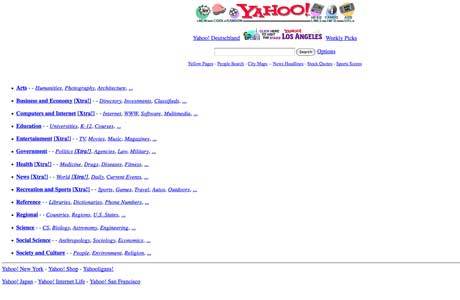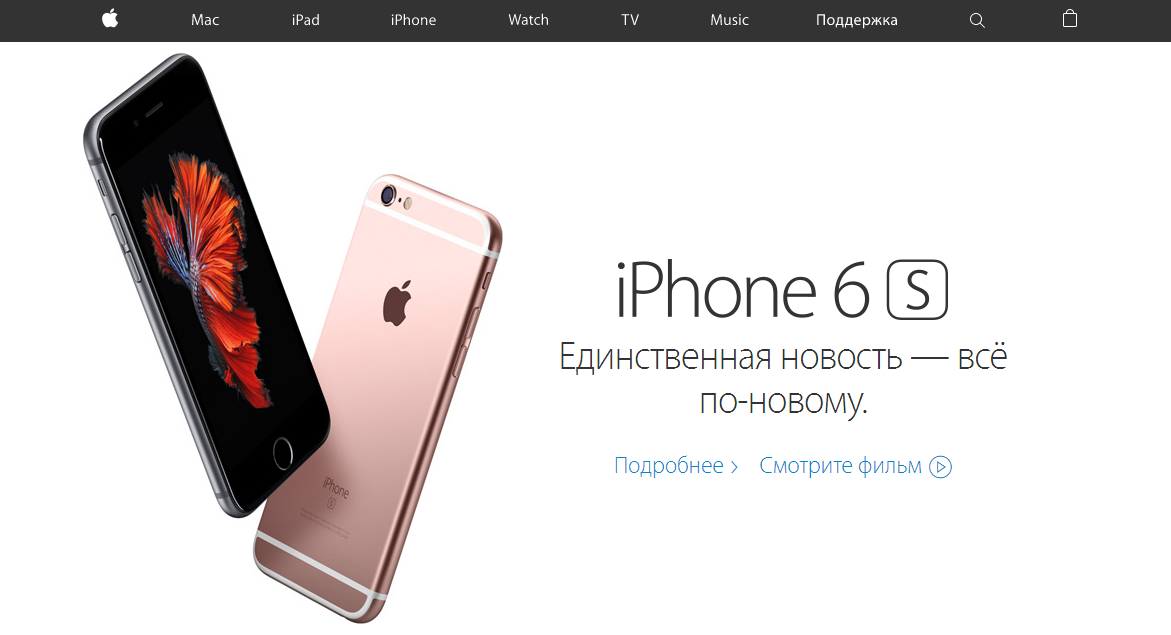Evolution of web development. 1990-Our days.
1990
Imagine a world without the Internet. More precisely, it exists in the form of protocols, allows you to exchange messages and letters, but the first website was created only at the end of 1990 (with the description World-Wide-Web, which is logical) and was located at info.cern.ch. Text, just text and nothing else.
Later, HTML, the basics of which were described at info.cern.ch, very quickly learned to support 16 colors and insert images, which led to the birth of the first browsers to support these features - Mosaic (1993) and NetScape (1994).
1994
There is a qualitative leap in web development - tables appear. They allow you to qualitatively organize information, align text in columns and bring the look of web pages closer to most modern ones.
As for the activities of website designers and developers, in a world in which there is only HTML, work is carried out mainly in primitive text editors.

1995
Playing with colors reaches its climax. The pages look awful, tasteless and often completely unreadable, but painting everything down to the buttons in bright colors is a sign of good taste. All this, however, does not prevent the real flourishing in the technology industry.
HTML is complemented by Javascript. Now developers are happy to add pop-ups and other responses to user actions on pages. JS will remain a real must-have for any website until the development of CSS, and it will remain relevant to this day.
In 1995, the PHP scripting language also appeared, greatly simplifying the creation of basic scripted pages, such as guest pages. And, of course, the launch of the Macromedia Shockwave platform, the main conductor of ideas for the animated Internet, cannot be ignored.
For simple web shop workers, Microsoft releases FrontPage HTML editor, which works on the principle of WYSIWYG (What You See Is What You Get). The application became wildly popular among non-professionals: now anyone at home could create a nice site in a few minutes. At the same time, FrontPage also found responses in the hearts of developers - it was ideal for working under a bunch of Windows-Internet Explorer.

1996
The year was marked by two high-profile debuts: CSS and Macromedia Flash. The markup language allowed to seriously reduce the size of the source code and the number of problems associated with banal text formatting.
Flash, on the other hand, became the basis of Internet animation for many years, a sign of a quality site and a magnet for casual passers-by.


1997
By 1997, web development hit an invisible wall - there were so many existing opportunities for developing and layout of sites that the computers of that time simply could not digest everything.
The main event was the announcement of HTML 4 - a version of the language that calls for the active use of CSS style sheets, and will immediately get rid of the costs of the first three versions. However, the finalized and combined version 4.01 will be officially announced only after 2 years and will subsequently serve for a long 15 years. Meanwhile, the number of Internet users has reached 100 million people.
As an alternative to FrontPage, Macromedia released Dreamweaver. True, in 1997 only a version for MacOS was created, only a year later an adaptation for Windows appeared. However, this did not prevent Dreamweaver from quickly taking a leading position in the market.
1998
CSS2 is out. Developers can now use block formatting, work with sound, create page-by-page styles, and generate site content. CSS2 has been serving faithfully for 18 years now (if we take into account the CSS2.1 edition released in 2011) and still has not lost its relevance, despite the active implementation of CSS3.
1999 - 2002
The period when nothing useful was born, except, perhaps, Internet Explorer 5.0 (1999) and 6.0 (2001) browsers and CMS Drupal. The latter, however, appeared only formally, serious popularity will come only after 3 years.
Games with bright colors are finally a thing of the past, dark tones and gradients are now in vogue, especially as a background. Particular attention is paid to navigation - the increased amount of content requires the competent design of menus and links.
2003 The launch of Facebook and MySpace introduces a new trend in website design - simplicity and functionality. Flash-animation is literally everywhere, any website layout designer should be fluent in this tool and offer it to the customer right from the doorstep. By the way, WordPress also appears to help developers, an ideal platform for creating popular blogs and information portals.
2004-2005
The year 2004 was marked by the launch of FireFox, a competitor to the practically uncontested IE. But a year later, YouTube was born. Despite the fact that at that moment it did not produce the effect of an exploding bomb, the project quickly bypassed the MySpace ratings, and a year later it was bought by Google for more than $ 1.5 billion. And that didn't surprise anyone. Moreover, the popularity of the service turned out to be such that for a long time the vast majority of videos on sites were from YouTube.
It is worth noting the release of Unity, a tool for developing 2D and 3D applications. On the web, this technology has proved to be excellent in creating browser games, and also proved useful for resources with the need to demonstrate prototypes and 3D models.
In addition, in 2005, another competitor to WordPress and Drupal appeared - CMS Joomla!
2007
Web design has been changing course to mobile devices since the beginning of 2007, because it was then that the iPhone was introduced to the general public and the first mobile browser appeared - Safari. And, as an element of adaptation to new realities, sites began to appear with minimal navigation and a narrow information field, but with long scrolling and dominance of images.
The first release of Sass, a popular CSS-based metalanguage that makes it easier to read and create source files, is coming out. Despite not the widest range of functions, the preprocessor quickly earned the respect of professionals and today it is difficult to imagine an experienced web designer who does not have experience with Sass.
FrontPage, which was last released in 2003, is being scrapped and replaced by Microsoft SharePoint and Microsoft Expression Web.
2008
Google creates Chrome, which very quickly bypasses Internet Explorer in popularity ratings. It is fast, convenient for both the user and the developer. Web designers are slowly getting used to the need to work on large and small screens.
Grids come into fashion, and later special frameworks appear that standardize and simplify work with individual elements for multi-station users.
2009
Alexis Sellier, influenced by Sass, creates his own LESS preprocessor in Ruby. Despite a small number of differences, most novice developers prefer this particular product because of its simplicity and versatility, and most importantly, because of the ability to work with the Twitter Bootstrap framework.
Microsoft announces the end of support for IE6, once the most popular browser in the world (even today it is used by about 0.1% of users).
2010-2013
These years were marked by the appearance of three main trends at once.
The first is responsive design. That is, now every self-respecting Internet resource must create a mobile version of the site that allows you not to lose content, while significantly increasing readability and download speed.
The second is the so-called flat-design, aka “flat”. This is the case when the developer tries to convey to the client the idea of the primacy of content, rather than visual design. Often, such a development is directly related to the first trend and serves as a much more tool for combining the uniqueness and versatility of the resource than with real ease of use.
There were those who disagreed with fashionable simplifications, which served as an incentive for the third trend - parallax design. This is nothing more than a combination of adaptive and flat design, with the concomitant giving of a 3D effect to a separate element.
2014
At the end of the year, the fifth version of the HTML language standard was published. For developers, work with audio and video content is finally simplified, which in fact served as the starting point for the death of Adobe Flash. In addition, it became possible to store data directly in the browser and manage its history, use geolocation information, fully work with databases and write to a file.
Our days
“Material” sites are in vogue. The essence of the direction, created by Google in 2014, is to present the working window as paper, which you can collapse, divide or remove, focus on a separate part. Initially, the trend was intended only for Android applications, but very quickly spread to the web and became a logical continuation (and for some, the antipode) of flat design.
Java applets are still alive. By the way, the first applet, like the language itself, was created in 1995, and today the vast majority of add-ons for working with geodata, 3D models, for collecting and analyzing data are made in Java.
HTML5's ability to play video without using Flash has created another important trend - to upload videos not as a separate add-on, but as a background image. This move allows you to kill two birds with one stone - it does not distract the client's attention from textual information and at the same time plays the video in full screen mode.